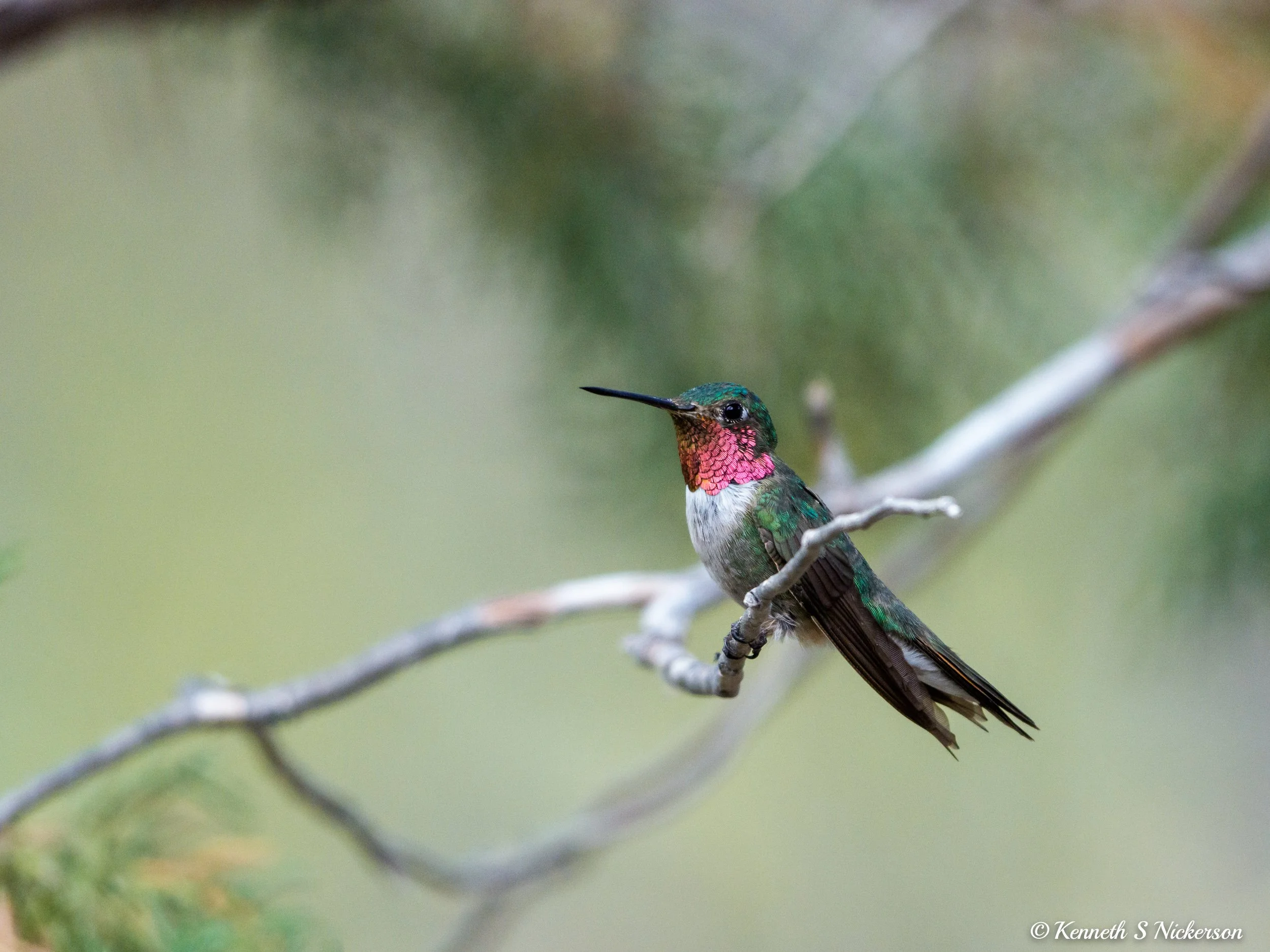Arizona Birding - Hummingbirds
I spent the last week of June photographing birds in southeast Arizona. It was a terrific trip. I added 62 birds to my 2025 species list with 41 of them being new to my life list. I am still processing my photographs from the trip, but I thought I would start with a quick post highlighting hummingbirds. Above is a photograph of a Costa’s Hummingbird, one of 4 new species of hummingbirds that I photographed on the trip. I took this photo during the evening of my first day in the town of Green Valley AZ south of Tucson. While many of my hummingbird photographs have been taken near a hummingbird feeder, this one was simply hanging around these flowers near the side of a pond.
I photographed this Violet-Crowned Hummingbird on my second day at the Paton Center for Hummingbirds in Patagonia AZ. The Paton Center is known for its Violet-Crowned Hummingbirds, one of the less common hummingbird species. It is a Mexican species that only has a very limited range in southeast Arizona and southwest New Mexico. I had photographed this species in Ramsey Canyon, slightly east of Patagonia, during my previous trip to Arizona in 2023. After visiting the Paton center, I headed to Ramsey Canyon where I stayed for the next two nights.
In the morning of my third day, I photographed this Anna’s Hummingbird outside my room at the Ramsey Canyon B&B. The Anna’s Hummingbird is one of the 6 species that I have seen during previous trips to Arizona. I wrote a post about hummingbirds back on June 1, 2024. At the time, I had photographed 18 species, so I am now up to 22 species.
During my third day of birding, I visited the Ash Canyon Bird Sanctuary, just a few miles south of Ramsey Canyon. There I photographed three more hummingbirds. This Broad-Tailed Hummingbird is identifiable by its rose/magenta throat, white breast, and green flanks. Southeast Arizona is such a good birding zone because of the unique ecosystem created by a collection of mountain ranges, predominantly located in Mexico, but extending into southeast Arizona and southwest New Mexico. Collectively, these ranges are referred to as the Sky Island ranges. The cooler Madrean pine-oak woodlands of the highlands stand above the hotter Sonoran and Chihuahuan deserts. Many Central American and Mexican birds only appear in the US in these mountains. Arizona reliably sees 15 species of Hummingbirds each year with additional species making occasional appearances.
Ash Canyon is a known location for the Lucifer Hummingbird, a new addition to my life list. It is most easily identified by its relatively long curved bill. Compared to the 15 hummingbird species in this unique habitat in Arizona, the entire area east of the Mississippi River only reliably sees a single hummingbird species, the Ruby-Throated Hummingbird.
This is a Rufous Hummingbird, also a new species for me. This photo is not as sharp because I saw only saw this single bird off at a significant distance. Given the distance, I was happy to get a photo this good. There is a very small population of Rufous Hummingbirds that come down from Alaska to winter in the southeastern US rather than Mexico. It took many years of research to determine that these few Rufous Hummingbirds were not simply lost vagrants.
The end of my Arizona trip was spent in Portal AZ, a town of about 80 people located at the mouth of Cave Creek Canyon in the Chiricahua Mountains. Here I added my last new hummingbird species, the Blue-Throated Mountain Gem. This is the largest of the northern Mexican hummingbirds. I had photographed its sister species, the White-Throated Mountain Gem, in Costa Rica back in 2023.
I also got some nice photos of three other hummingbirds while in Portal. This is a Rivoli’s Hummingbird, the second largest of the northern Mexican hummingbirds. It is also known as the Magnificent Hummingbird and is closely related to the Blue-Throated Mountain Gem.
This is a Black-Chinned Hummingbird flashing its purple throat. It is a common hummingbird in Southeastern Arizona. The last 3 photos of this post were taken at the Cave Creek Canyon Southwestern Research Station. The afternoon light was brightly illuminating a hummingbird feeder. Behind the feeder were very heavily shaded bushes which created this essentially black background in these photos.
My final hummingbird photo is of a Broad-Billed Hummingbird flying towards a feeder. The hummingbird wings move so quickly, that I took this photo at a shutter speed of 1/6400 of a second to freeze the wings. The Broad-billed is identifiable by its red beak.
I expect to post another two or three posts about my Arizona trip over the next week to 10 days, so keep posted.









